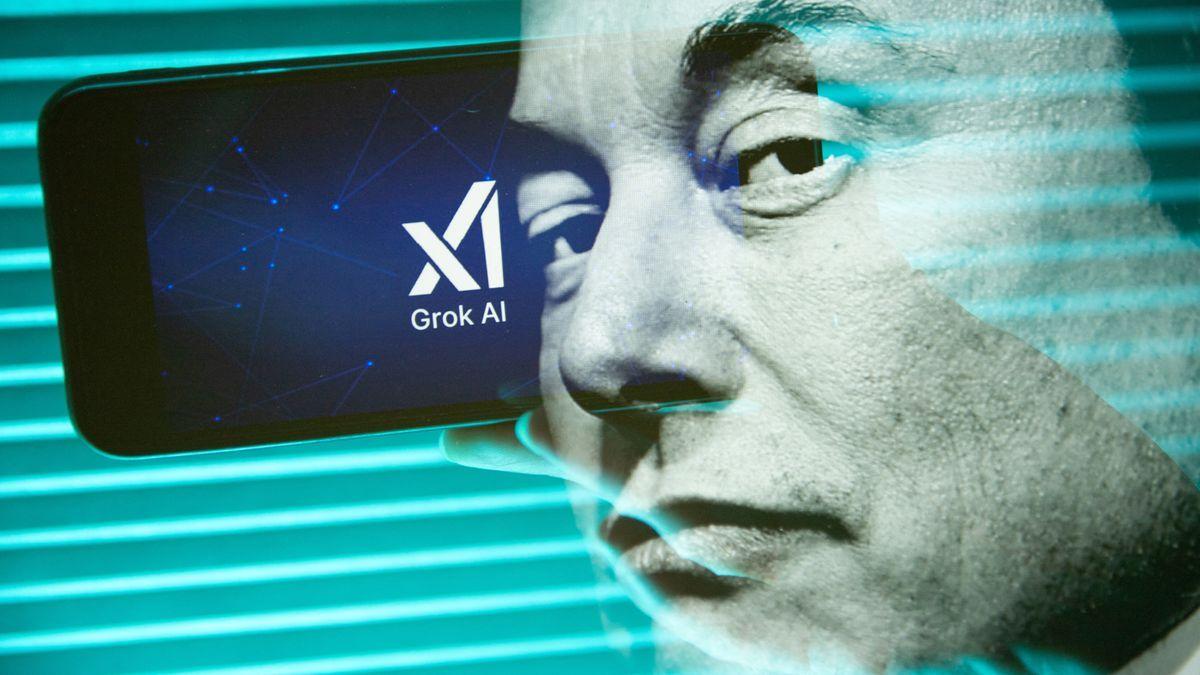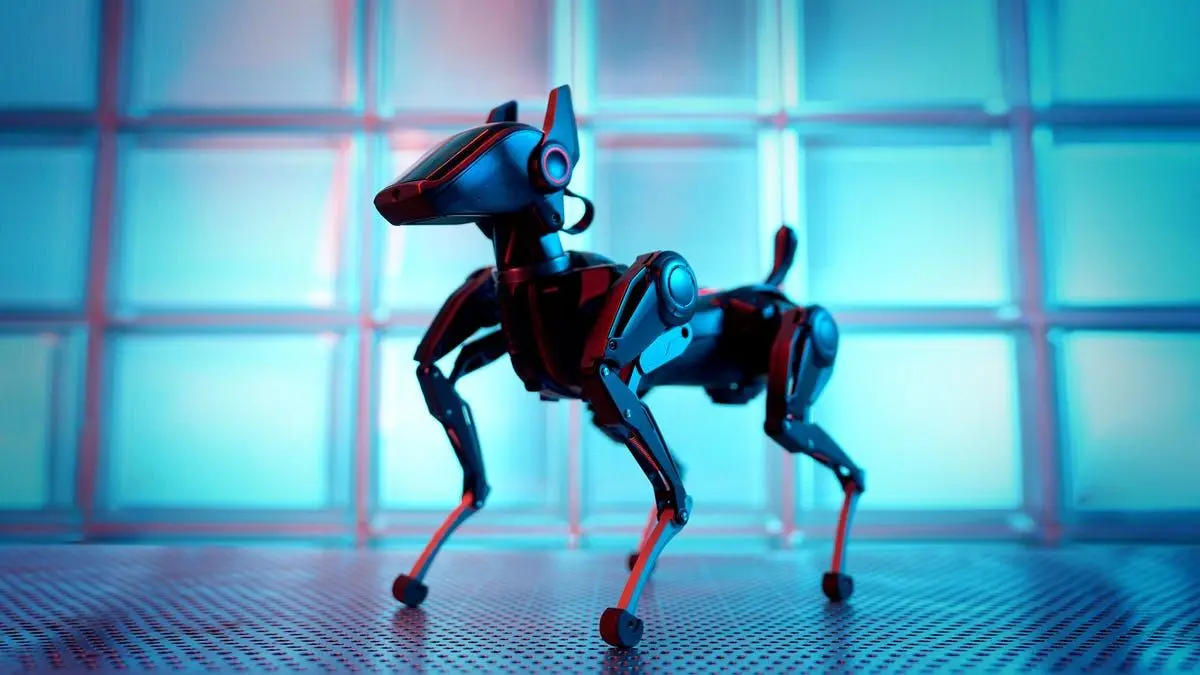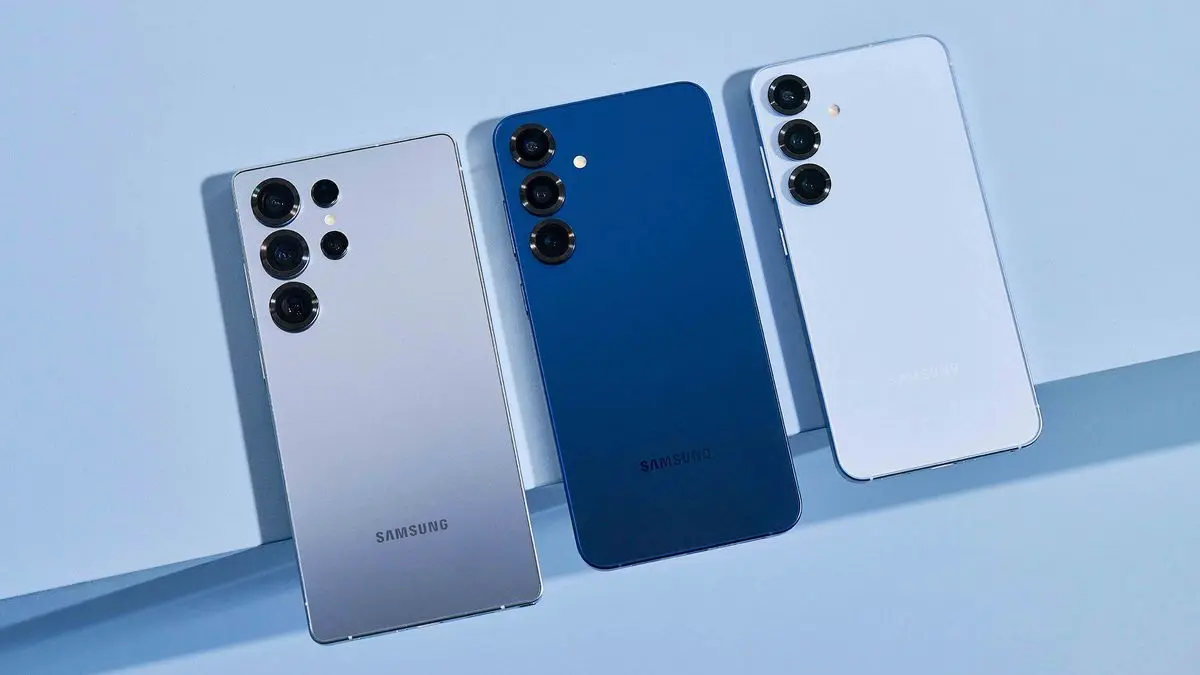Personifi AI's Shazam Band: The AI-Powered Collar That Gives Pets a Voice
5 Sources
5 Sources
[1]
Personifi AI's New Dog Collar Finally Gives Fido a Voice
Personifi AI is attempting to change the way you interact with man's best friend. The Austin, Texas-based company's Shazam Band, an AI-powered dog collar, is a wearable device that literally gives your dog a voice. According to the company, the latest technology at the core of the product is called Sentience Augmentation. The tech uses both sensors and machine learning to decipher your pooch's reasoning, psychological state, and health needs. It also allows your pet to interpret your emotional state and respond appropriately. Your Pet's Voice, Powered by AI John McHale, CEO of Personifi AI, says, "The Shazam Band is a game-changer for the bond we share with our pets. We've always imagined what our pets would say if they could speak -- well, imagine no more. Shazam makes that dream a reality, bringing joy, empathy, and understanding into every interaction." The Shazam Band is an interesting device powered by a highly trained AI. With it, come visions of Dug from the movie Up, or MCU fan-favorite, Cosmo the Dog. Unlike those fictional characters, though, Personifi AI's dog collar is 100% real. More fascinating, however, is the collar's feature set. It offers 27 built-in selectable personas, ranging from hard-boiled mafia boss to snarky southern belle. Plus, the Shazam Band lets your pet express themselves in several languages, including English, Spanish, Patois, and Mandarin. The device also functions as a GPS tracker and includes geofencing support. That means you won't need to worry about whether you should put an AirTag on your dog's collar. So, what if you're more of a cat person? Don't worry. As long as it fits, you can also use Personifi AI's collar with other animals. The device comes in two sizes. The Shazam Band's Sentience Augmentation system is also exceptionally advanced. Through the technology, your furry companion can express their feelings through a number of sound bites. So, if you've ever wondered if your dog was feeling sad or bored, now you can know for sure. Supposedly, the more you communicate with your beloved pet via the collar, the more natural interactions will become. Does the Collar Actually Work? That's a fantastic question. And while we haven't gotten our hands on the device just yet, a few other publications have reported that, yes, it works. CEO McHale has even been training the Shazam Band's AI with his pup, Roscoe. The rub, however, is that the AI device is not cheap. The wearable has a retail price of $495 or $595 depending on the size you need. To access additional voices, you'll need to shell out another $100 per. Then there's the $295 annual subscription fee. It's a lot of cash to justify a gadget that hangs on your dog's neck. But, if you're someone who longs to know what your pooch is really thinking, then that expense might seem worth it. On the other hand, if the cost seems excessive, you may want to check out our write-up on some other DIY pet wearables. Either way, the notion that this technology may lead to a new era of pet communication is definitely something to get excited about.
[2]
This AI device will let you talk to your dog or cat (sort of) | Stuff
Shazam's smart pet collar uses AI to give your dog a voice, sort of. It's more like an AI chatbot your pet wears around its neck This year, AI hardware is the latest buzzword. And apparently we're also officially entering the era where your dog might start talking back to you. No, your Labrador hasn't secretly been working on a stand-up comedy routine. It's all thanks to a new voice-activated collar from a company called Personifi AI, which is trying to turn your pet into a chatbot-wearing companion. This isn't exactly Dr. Dolittle levels of communication. The collar has a microphone and speaker, allowing it to hear your voice and respond with a pre-recorded human voice. That's the caveat - you're technically chatting to a cleverly programmed device, not unlocking your pet's secret inner monologue. So it's a little less advanced than an AI chatbot like ChatGPT. It can't think on the fly, but rather uses around 8000 lines of pre-recorded dialogue. Inspired by McHale's own close call with his dog, Roscoe, the Shazam collar is packed with safety features as well. It can detect the sound of a rattlesnake's rattle and warn you, or help you track down your runaway pet. It's even got the capability to remind you to feed your dog if it detects that morning's food hasn't been touched. As for the conversational side, there are 27 different voice personas to choose from. These range from cutesy and cuddly to, well, mildly annoying. Your dog's personality will be illustrated by a human avatar, because why wouldn't it? It's a bit weird, to be honest, but there's Bella, the sweet little girl type, and Dr. Gates, a Nobel Prize-winning scientist, naturally. And just to keep things fun, changing the character later will cost you $99 a pop, so choose wisely. The whole thing sounds like a laugh until you realise it comes with a price tag to match the novelty. If you're eyeing one for your furry friend, it'll set you back $495 for cats and $595 for dogs. And just like every piece of tech these days, there's a subscription. For $195 a year, you get the "feline" or "ultra" subscription. But if you really want your pet to have a fully sentient personality, you'll need to fork out $295 a year for the BrainBoost service that uses AI. Fancy giving it a go? The Shazam AI collars are available for pre-order now, but don't expect to hear your dog quipping about last night's footy until February 2025.
[3]
I've seen the new AI collar that lets your dog talk, and it's as wild as it sounds
The Shazam Band is a new AI-powered collar containing speakers and sensors that lets your pet talk to you, just like the dogs in the Pixar movie UP can. Once your pet is wearing the band you can have a conversation with it, and the band emits a human voice in response to your questions. You can also use the Shazam Band to track your pet if they wander off, and it will alert you via text message if they get into danger, say from other animals or traffic, or if they got left behind somewhere. You can find them using the Shazam app and the GPS inside the band. Ever since the Pixar film UP came out in 2009 people have been trying to make a real-life version of a collar that lets your pet talk to you. Back in 2021 TechRadar even interviewed the makers of Petpuls, one of the first AI-powered dog collars that aimed to give your pet a voice. So far though, nobody has really managed to crack a talking pet collar, but Shazam aims to get humans and animals talking once and for all. To find out more we met with John McHale, CEO of Personifi AI, the company behind Shazam. John explained that he got the idea for using AI to help pets communicate after his dog, Roscoe, got bitten by a rattlesnake, and nearly died because he didn't know what had happened. "It got me thinking about AI and how the tragedy could have been averted and it became clear that we could apply AI in such a way that if Roscoe got bit by a rattlesnake, even if I wasn't present, he could have texted me and notified me right away that he had had a rattlesnake encounter. That was the genesis of Shazam." Shazam works for any type of pet that can fit the collar, so think dog, cat, goat, or whatever four-legged friend you have running around your house. It works by using AI, trained on large data sets in a similar way to the way ChatGPT is trained. The band contains a number of sensors, in particular, it seems to listen to the words that you say to your pet and react to them, but also interprets the kinematic behaviors of your pet. The result is that the Shazam Band provides what McHale calls "sentience augmentation". What that means is it articulates your pet's mood, experience, and responses back to you - as they're happening - with little sound bites like "I'm feeling sad right now" and "You know I'm down to snuggle". The idea is that you start to get into having a conversation with your pet and over time it learns and becomes more natural. The million dollar question, of course, is does it actually work? I had a live demo of Shazam by the Personifi AI team in Texas, and I still don't quite know what to make of it. John McHale demonstrated with his own dog, Roscoe, who was wearing the Shazam Band and I got to hear the dog 'speak'. Without getting to test the device on my own pet it's really hard to say how well it works, but in the demo, we saw Roscoe's Shazam collar successfully interpret when his owner was happy or sad, and produce the appropriate responses. Also when McHale wrestled a dog toy in Roscoe's mouth, much to his delight, his collar came out with Captain America's famous catchphrase, "I could do this all day!". They do say you should never work with children and animals, and during the live demo, Roscoe was clearly not in the mood for fun times. He preferred to lie on the sofa, but it's impossible not to smile when hearing a dog 'talk' for the first time, especially since the voices have all been voiced by comedic actors. Many are voiced by Bobby Johnson, AKA RxCKStxR, a social media celebrity renowned for giving pets a voice online. There are 25 different personas you can choose between for your pet, and each one is effectively a different voice. During your first 30 days of owning the Shazam Band, you get to try them all out before you have to settle on the persona that best suits your pet. We heard a lovable goofball, a witty southern belle, and a fast-talking mafia boss. Does one of those sound like your pet? There were a couple of options for the international market, too - there was one British voice (male and posh, think Hugh Grant) and a female Spanish voice. Most striking was the Jamaican voice, which used a Patois. Considering how crazy people get about their pets, the potential for Shazam is clearly huge, and once we get our hands on one in November we'll bring you a full review. The ethical considerations of anthropomorphizing your pet still need to be considered, but as a cat owner, I would love to be able to find out what my cat actually wants when he looks at me, purrs, and meows. Is it attention? Is it food? Is it playtime? It would be very useful to know. Ultimately, I'm left feeling slightly undecided by the whole talking pet situation. It was certainly fun for the owner, but I do wonder what Roscoe thought of it all. He seemed pretty happy with voices coming from his collar, but it's not like he had a choice in the matter. What if he's a dog that doesn't want to be anthropomorphized? I guess that despite the inroads Shazam makes into human and animal interactions, we'll never really be able to ask him. The Shazam Band is available for pre-order in two different versions. The full GPS-enabled band costs $595 and a less fully-featured $495 version is available from shazampet.com.
[4]
This Talking Pet Collar Is Like a Chatbot for Your Dog
A new smart collar aims to give pet owners the ability to talk to their fur babies. Or at least fake it. Humans have been trying to talk to animals ever since we figured out how to form words. In modern times, we turn to technology for the solution -- giving our dogs talking buttons to paw at, or trying to use artificial intelligence to help us understand whales. The latest and perhaps most direct approach at human-animal communication is a voice-activated collar that gives your pet the power to talk back to you. Or at least, that's the idea. John McHale, a self-described "tech guy" based out of Austin, Texas has a company called Personifi AI. The startup's goal, as the name implies, is to create tech that will "personify everything," as McHale puts it. The first step, for now, is pets. The company's collar has a speaker on it; talk to your pet (or, really, talk to the collar) and you'll hear a prerecorded human voice responding to you, creating the illusion that your pet has a human-like personality and the ability to speak English. The collar is just for cats and dogs now, but McHale hopes to get into wearable devices for other critters and, eventually, humans. McHale got the idea for the talking collar after his dog, Roscoe, got bit by a rattlesnake. McHale didn't realize what had happened at first, until hours later when Roscoe started seeming very unwell. Don't worry, Roscoe lived and is doing just fine now, but he did have to spend 10 days in the animal hospital, a stay which presumably racked up a large veterinary bill. That harrowing close call stuck with McHale, and he wondered how things might have gone differently. Could he have helped Roscoe sooner if the dog had just been able to tell him what happened? Thus, the idea of Shazam was born. Oh yeah, the collar is called Shazam, though it has no relation to either the superhero movies or the very well known music discovery service of the same name. Shazam (for pets) has both a microphone and voice box inside, allowing it to hear your voice and respond with one of its own. The idea is to make owners feel like they're having conversations with their pet when really, they're talking to a chatbot on the collar. "We start with states of being," McHale says. "We measure all sorts of things about the human, about the pet, and about the world. And all those variables are essentially ongoing and changing and are inputs to what we call the cognitive cortex, which we build, which is based on machine learning and large data sets." That sort of worldbuilding for your pet won't come cheap. The collars start at $495 for cats, and $595 for dogs. There are also subscription fees -- a $195 a year for the feline and "ultra" collars, or $295 a year for the BrainBoost service, which a rep for Shazam says is, "what brings all of the truly sentient qualities such as empathy, reasoning, social awareness, and self awareness." Both of those subscription fees are waived for the first year, but will automatically renew after a year. Without the BrainBoost subscription, the band falls back to a generic voice and loses its dynamic qualities, so if you want the best experience, you have to keep paying the $295 yearly fee after the first (free) year ends.
[5]
I watched an AI collar make a dog talk, and it was unreal | Digital Trends
All of us talk to our pets, but what if our pets could talk back? That's the premise of Personifi AI's Shazam Band, a wearable that puts your pet's mood, movements, and emotions into words. By using AI, it actually makes a two-sided conversation possible. If all this sounds crazy, it's only the beginning of what makes the Shazam Band one of the maddest pieces of tech we've seen in a while. And if I hadn't actually seen it working, I doubt I'd believe it was real. This is Shazam, an AI pet collar Shazam (no, not that one) comes in two sizes, one for a dog and one suitable for cats, and is worn like a collar. It contains various sensors, including a 6-axis gyroscope, GPS, temperature sensor, speaker, and microphone. There's a battery inside that lasts for several weeks on a charge and another battery in the box, so you can always have one charged up and ready to go. It uses AI to interpret your pet's movements and actions and the tone you use when speaking to it to create verbal responses that reflect your pet's intentions, thoughts, and personality. I know. It sounds either staggeringly stupid or like the best thing ever, depending on your level of pet obsession. But stay with me, as it's way better thought out than you may expect. Wondering how Shazam interprets what your pet is thinking accurately enough to put it all into words that match your pet's personality? The company has teamed up with Matt Beisner, a dog trainer best known for the Dog: Impossible show on Disney+, to train the AI, along with social media voice-over sensation Bobby Johnson, also known as "The RxckStxr," and voice actor Jorjeana Marie. Another key member of the team is Roscoe, Personifi AI's founder and CEO John McHale's dog. Roscoe is one of several hundred animals that have already been training the AI. Over a short Zoom video call ahead of the announcement, I saw Roscoe interact with McHale and other members of the team through Shazam. Not just tail-wagging, bouncing-up-and-down interaction, but verbal interaction. No, I haven't gone crazy; it's as barking mad as it sounds. One of the strangest tech demos I've seen When I spoke to McHale, it was early morning at their offices, and Roscoe had not been fed or walked and was apparently a little grumpy at being woken up. We laughed at the prospect of running a tech demo using an animal, a wearable, and an AI system interpreting its actions and operating in real time and how it was a recipe for things to go wrong. In reality, the next few moments were an eye-opening glimpse of a Dr. Doolittle-style future. Roscoe was asked if he wanted to go for a walk and chase squirrels, as well as if he had been fed yet, all spoken in that usual rhetorical way we speak to pets. Except through Shazam, Roscoe replied. Not in that if-you-listen-hard-I-think-he-said-sausages way, but actually talked. Well, Roscoe didn't talk, but the words came from the speaker on the Shazam wearable and in a voice that brought out Roscoe's lackadaisical personality. Yes, he was hungry, the squirrels were likely to get chased, and he was frustrated that none of these things had happened. The voice and style will be familiar to anyone who watches Bobby Johnson's voice-over comedy skits. No, I haven't gone crazy; it's as barking mad as it sounds. It was one of the most bizarre tech demos I've seen, and I smiled and laughed throughout, my mind flip-flopping between childish joy and complete bewilderment. You won't be discussing Tolstoy with your Shazam-wearing pet, but you will see a new side to its personality. However, there's the potential for a more serious use case too. McHale explained that he got the idea after Roscoe had been bitten by a snake and managed to hide the problem, but was clearly not himself. Roscoe eventually underwent several serious surgeries and survived, but if he had been able to say he'd been bitten by a snake, then things could have been taken care of far sooner. Does it turn your pet into an AI chatbot? Even with Shazam, Roscoe is unlikely to have been able to articulate he'd been bitten by a snake, but he may have been able to vocalize that he wasn't well in a way we could quickly understand and act upon. Any resulting vet visit would have been memorable, too, that's for sure. Shazam may also be able to help your pet vocalize concern for you, bringing further emotional support to the moment when they come over and check in, as they seemingly understand that you're sad, unwell, or in need of a furry hug. Because Shazam is AI-driven and always learning, it's not like getting a series of canned responses that approximate emotion. It's more like an AI chatbot, but rather than being a voice from an empty vessel, Shazam takes real emotions and your pet's personality, or the personality you give it, and blends them into a voice, so it shouldn't come across as something it's not or a completely artificial fabrication. Shazam has a choice of 27 characters, each with its distinct persona and tone ranging from a witty Southern belle to a fast-talking mafia boss, plus the ability to further craft individual personality traits through the app. Several voices are available in both Spanish and Mandarin Chinese as well. The app also shows activity tracking data from the Shazam collar, and the built-in GPS keeps track of your pet, plus it has a geofencing feature to encourage it to stay within certain set boundaries. It does so by verbally telling the pet through the speaker that it's going where it shouldn't, as if it were its own subconscious, which should confuse the neighbors. You set a single voice as the primary caregiver and can program other secondary voices as well, to both add safety and keep things simple for the pet. Giving your pet a voice isn't cheap Putting words in your pet's mouth is not going to be cheap. The Shazam wearable is $495 for the small version and $595 for the large version, and this includes one voice option and access to the app for a year. If you want to change voices, it's $99 each time, and there's a $295 subscription for every year after the first. Preorders begin on October 25, and orders will ship in February 2025. Only you know if it's worth it We already recognize and try to understand our pet's personalities and emotions. Shazam takes it to the next level by vocalizing those emotions in a language we understand. When you see it in action for the first time, it may look and sound a bit silly, but after a few moments, you will understand how much fun could be had with it and even how it could help keep your pet safe and healthy, too. How long that fun will last after the novelty has worn off is the big question. There's also the considerable expense to find out. Shazam is such a crazy product that you're either going to walk away after seeing it, desperate to put in your order, or think it's one of the most ridiculous things ever made. The voices and characters created by Personifi AI won't be for everyone either, and the ones I heard went hard on their chosen hook -- the superhero character was like an even more hyped-up Buzz Lightyear, for example. I imagine they could get quite grating. Though, if you don't want Shazam/your pet to interrupt you, it's as simple as saying "quiet," just as you would normally do. Every owner has wondered what their pet would say if it could talk, and Shazam does make it possible to somewhat answer that question. As to whether it works in the real world and outside the confines of a very short demo remains to be seen, but I came away from seeing Shazam in action thinking that there are going to be a lot of crazy cat and dog people out there who will lap this insane piece of tech up, no matter the cost.
Share
Share
Copy Link
Personifi AI introduces the Shazam Band, an AI-powered collar that allows pets to 'speak' using pre-recorded human voices, offering a new way for owners to interact with their animals.

Introducing the Shazam Band: A Revolutionary Pet Communication Device
Personifi AI, an Austin-based company, has unveiled the Shazam Band, an AI-powered collar designed to give pets a voice
1
. This innovative wearable device aims to transform the way humans interact with their furry companions, offering a glimpse into a future where pet-human communication reaches new heights.How the Shazam Band Works
The Shazam Band utilizes a technology called Sentience Augmentation, which combines sensors and machine learning to interpret a pet's behavior, emotional state, and health needs
1
. The collar is equipped with a microphone, speaker, GPS, and various sensors, including a 6-axis gyroscope and temperature sensor5
.When an owner speaks to their pet wearing the Shazam Band, the device responds with a pre-recorded human voice, creating the illusion of a two-way conversation
2
. The AI interprets the pet's movements, actions, and the owner's tone of voice to generate appropriate verbal responses5
.Features and Functionality
The Shazam Band offers an array of features designed to enhance pet-owner interactions:
- Voice Personas: Users can choose from 27 different voice personas for their pets, ranging from a "witty southern belle" to a "fast-talking mafia boss"
3
5
. - Multilingual Support: The device supports multiple languages, including English, Spanish, Patois, and Mandarin
1
3
. - GPS Tracking: Owners can locate their pets using the built-in GPS and geofencing capabilities
1
4
. - Safety Alerts: The collar can detect potential dangers, such as the sound of a rattlesnake, and alert the owner
2
4
. - Health Monitoring: It can remind owners to feed their pets if it detects that food hasn't been touched
2
.
Development and Inspiration
John McHale, CEO of Personifi AI, was inspired to create the Shazam Band after a personal experience with his dog, Roscoe, who was bitten by a rattlesnake
3
4
. This incident highlighted the potential benefits of improved pet-human communication in emergency situations.Pricing and Availability
The Shazam Band comes with a premium price tag:
- Cat version: $495
- Dog version: $595
- Annual subscription: $195 for basic features, $295 for advanced AI capabilities
4
5
The device is currently available for pre-order, with an expected release date of February 2025
2
.Related Stories
Ethical Considerations and Limitations
While the Shazam Band offers an exciting new way to interact with pets, it also raises questions about the ethics of anthropomorphizing animals
3
. Critics may argue that the device projects human traits onto pets rather than truly interpreting their thoughts and feelings.It's important to note that the Shazam Band doesn't actually translate a pet's thoughts. Instead, it uses AI to generate responses based on pre-recorded dialogue and interpretations of the pet's behavior
2
5
.The Future of Pet-Human Communication
The Shazam Band represents a significant step forward in the field of pet-human communication technology. As AI continues to advance, we may see even more sophisticated devices that bridge the gap between humans and their animal companions
3
5
.While the effectiveness and practicality of the Shazam Band remain to be seen in real-world applications, it undoubtedly opens up new possibilities for understanding and interacting with our pets in ways previously confined to the realm of science fiction.
References
Summarized by
Navi
Related Stories
Recent Highlights
1
Meta acquires Manus for $2 billion, adding revenue-generating AI agents to its platforms
Business and Economy

2
China proposes world's strictest AI chatbot rules to prevent suicide and emotional manipulation
Policy and Regulation

3
Musk's xAI acquires third building, pushing AI compute capacity to a massive 2 gigawatts
Technology








